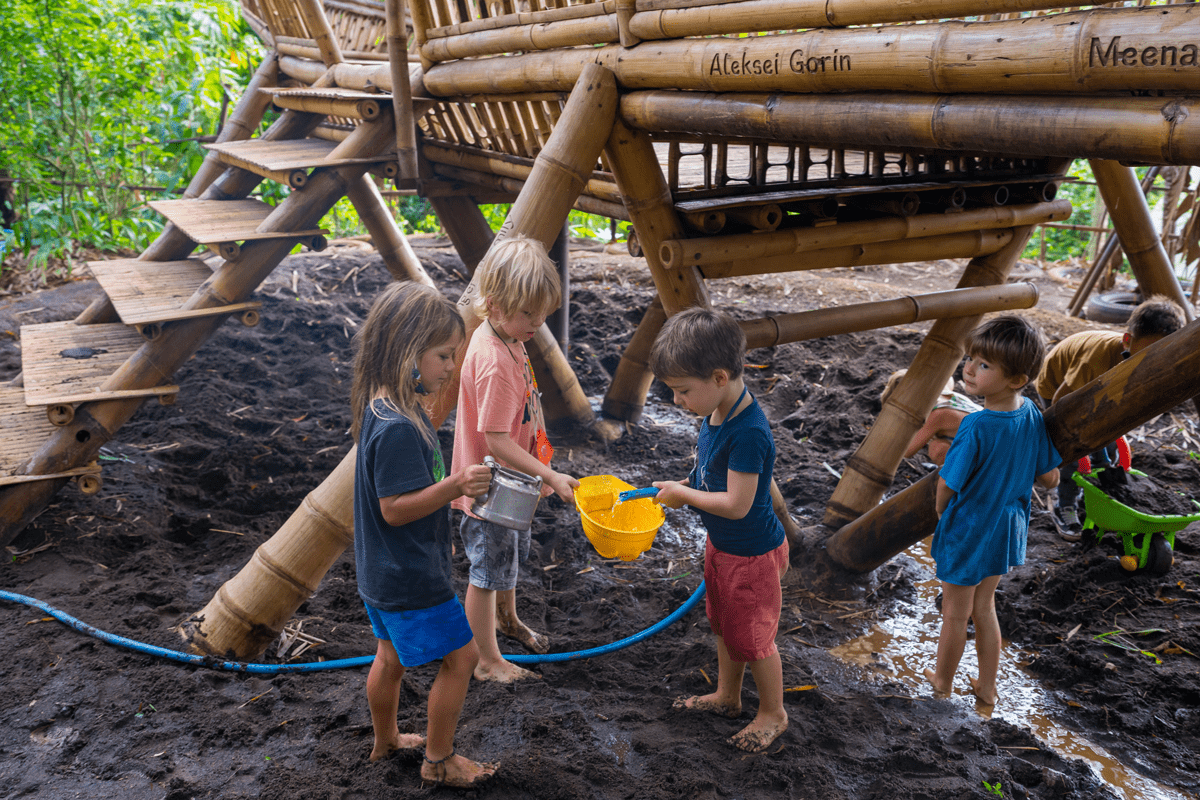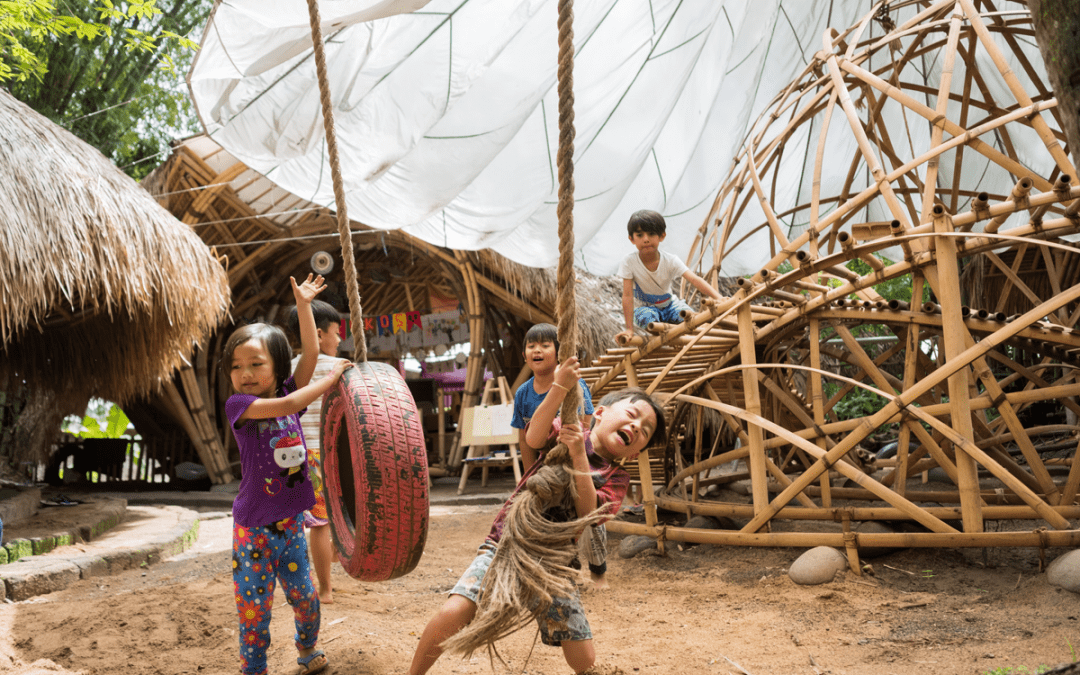When I walk around the Green School Bali campus, hearing the laughter, seeing students in the gardens, listening to the music, etc etc… I often have to remind myself that this is a school. I believe that learning (and school) should be FUN! But … sometimes it looks like there’s more playing than learning.
But – of course – we all know that people learn more effectively when they are playing. Right?
I read recently that neuroscientists have found that it takes approximately 400 repetitions to create a new neuronal connection (that is, to learn something new) – except when playing, when it only takes 20 repetitions.
Wow … think about it.
As educators, why would we create experiences that weren’t fun and playful?
I do lunchtime duty every Thursday in the Early Years. It is, without doubt, the favourite calendar reminder I get. I’m serious about health and safety, and our pre-K and Kindy students push it to the limit. The swings, the pond, the bamboo pirate ship, the hose (water, water, everywhere (!)) – our Early Years Wonderland is awesome. It is set up for students to play. And I see so much learning. Whilst our students play I see them learning life-skills – collaboration, problem-solving, critical and creative thinking, communication; I see them build mindsets – empathy, integrity, trust, community. When I talk to the Early Years teachers about it, they tell me that the playground is just an extension of ‘classroom time’ – and that students are ‘always playing’ throughout the whole day.
 Our Early Years learners feeling the muddy earth squish between their toes
Our Early Years learners feeling the muddy earth squish between their toes
Many pre-K programs are play-based and we are happy to have ‘play time’ be the normal mode of learning. But then, somewhere along the way, people start to separate play time from learning time. Somehow, the academic outcomes and achievement standards become so important that some schools/teachers think it is more important to sit in rows, at desks, doing repetitive and boring activities to hardwire new learning. And play time becomes something that happens when students get a break from learning.
When I taught Middle School Maths, a quarter of my weekly class time was spent playing games. Our Middle School Thematics often turned into role-play game-style units. Students in elective art classes designed and built their own games. These opportunities gave students a chance to learn through play.
I know there’s limitations to how far a play-based pedagogy can go. But, we need to keep providing opportunities to play for our older students. And for us as adults, too. So let’s not stamp out the joyful, real-learning moments of play. Let’s not put ‘Learning’ into a separate category to having fun and playing.
If we truly want our students to learn, then let them play.

